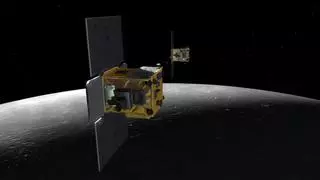NASA has developed a new gen-next spacesuit, for its advanced space ventures including the manned Mars mission, that can supply oxygen and protect the astronaut from extreme temperatures.
The new space suit is called the “Z-1 Prototype Spacesuit and Portable Life Support System (PLSS) 2.0“.
NASA’s current space suits, designed in 1992, were made for crews aboard the space shuttle fleet and those spending time at the International Space Station (ISS).
However, with the space shuttle fleet’s recent retirement and the country’s latest goals to go to Mars, an asteroid, and beyond, NASA has recognised that it may be time to create more robust and technologically—equipped suits for astronauts.
It is a rear-entry space suit that can do pretty much anything the actual spaceship does, from supplying oxygen, removing carbon dioxide, and protecting the astronaut from extreme heat or cold, the ‘Daily Tech’ reported.
The suit is made up of many hard elements on top of its fabric, and becomes flexible when inflated. There is a hatch and life support pack on the back of the suit, which allows the astronaut to attach to the spacecraft or a rover.
The suit also has urethane-coated nylon and polyester layers to “maintain pressure” and allows for greater flexibility in the limbs and torso.
Astronauts get into the suit through a suitport, which is the combined hatch and life support pack. An airlock is not required to get in and out of the suit, meaning they can get in and out of the suit faster without having to worry about wasting air.
This is because the suit operates at the same pressure as the spacecraft. The hatch simply won’t open if there’s a pressure difference.
Other new features include technologically advanced scrubbers to remove carbon dioxide, which are capable of regenerating on their own by dumping the gas instead of having to bake the lithium-hydroxide or metal oxide scrubbers between missions.
The suit packs a water membrane evaporation cooler that cools the suit through the same method as sweating instead of current techniques, which consists of a sublimator that only works in a hard vacuum.
The Z-1 will actually serve as a model for the Z-2, which is expected to be ready by 2015.
More Like This
Published on December 20, 2012






Comments
Comments have to be in English, and in full sentences. They cannot be abusive or personal. Please abide by our community guidelines for posting your comments.
We have migrated to a new commenting platform. If you are already a registered user of TheHindu Businessline and logged in, you may continue to engage with our articles. If you do not have an account please register and login to post comments. Users can access their older comments by logging into their accounts on Vuukle.